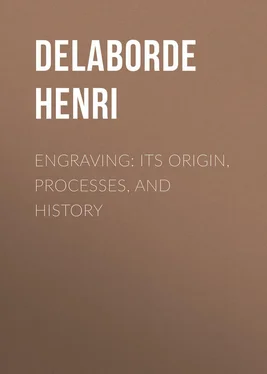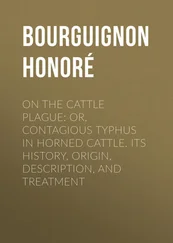Henri Delaborde - Engraving - Its Origin, Processes, and History
Здесь есть возможность читать онлайн «Henri Delaborde - Engraving - Its Origin, Processes, and History» — ознакомительный отрывок электронной книги совершенно бесплатно, а после прочтения отрывка купить полную версию. В некоторых случаях можно слушать аудио, скачать через торрент в формате fb2 и присутствует краткое содержание. Жанр: foreign_antique, foreign_prose, на английском языке. Описание произведения, (предисловие) а так же отзывы посетителей доступны на портале библиотеки ЛибКат.
- Название:Engraving: Its Origin, Processes, and History
- Автор:
- Жанр:
- Год:неизвестен
- ISBN:нет данных
- Рейтинг книги:5 / 5. Голосов: 1
-
Избранное:Добавить в избранное
- Отзывы:
-
Ваша оценка:
- 100
- 1
- 2
- 3
- 4
- 5
Engraving: Its Origin, Processes, and History: краткое содержание, описание и аннотация
Предлагаем к чтению аннотацию, описание, краткое содержание или предисловие (зависит от того, что написал сам автор книги «Engraving: Its Origin, Processes, and History»). Если вы не нашли необходимую информацию о книге — напишите в комментариях, мы постараемся отыскать её.
Engraving: Its Origin, Processes, and History — читать онлайн ознакомительный отрывок
Ниже представлен текст книги, разбитый по страницам. Система сохранения места последней прочитанной страницы, позволяет с удобством читать онлайн бесплатно книгу «Engraving: Its Origin, Processes, and History», без необходимости каждый раз заново искать на чём Вы остановились. Поставьте закладку, и сможете в любой момент перейти на страницу, на которой закончили чтение.
Интервал:
Закладка:
It is of no consequence, for the matter of that, whether wood engraving was first applied to the making of pious pictures or to the manufacture of cards. In any case the process is generally looked upon as the oldest method of engraving, and as the first to give types to be multiplied in proofs by printing.
M. Léon de Laborde, one of the clearest and best informed writers on the origins of engraving and typography, considers, on the other hand, that engraving in relief on metal, rather than the xylographic process, was the proximate cause of the discovery of printing. In a work published in 1839, which unfortunately has yet to receive the amplifications promised by the author 12 12 See in "L'Artiste," 1839, an article entitled "La plus ancienne Gravure du Cabinet des Estampes de la Bibliothèque royale est-elle ancienne?"
M. de Laborde declares that the first printed engravings must have been dotted ones: that is, prints produced in the peculiar mode already touched upon, and in which the black parts come out sprinkled with white dots. According to him, engraving, or, to speak more exactly, the printing of engraved work, must have been invented by goldsmiths rather than by draughtsmen or illuminators. The former, by the nature of their craft, possessed the tools and the necessary materials, and were therefore in a better position than any one else to stumble upon the discovery of the process, if not deliberately to invent it. As matter of fact, many of those who worked in the Low Countries, or in the Rhenish provinces, during the first years of the fifteenth century, printed works in the early dot manner: in other words, engraved in relief on metal. And those xylographic specimens which are usually looked upon as the oldest examples of engraving, are in reality only the outcome of a reformation, and the product of an art already modified.
The opinion expressed some time ago by M. Léon de Laborde has recently been supported by the discovery of two engravings, in the early dot manner, belonging, we think, to the year 1406, and on which we have ourselves published some remarks. 13 13 "Notice sur deux Estampes de 1406, et sur les Commencements de la Gravure en Criblé." "Gazette des Beaux-arts," t. I^{er}, 2^e période, 1869.
But our argument being only founded on the similarity of certain external facts, so to speak, and on the probability of certain calculations, it is not really possible to attribute to these documents so secure a standing as to those whose age is established by dates, and set practically beyond question.
Now, the oldest of the dated engravings in relief on metal is the "St. Bernardino of Siena," wrongly called the "St. Bernard," belonging to the Bibliothèque Nationale in Paris. This engraving in the dot manner bears the date 1454. It is, therefore, later than the "St. Christopher" engraved on wood, and later even, as we shall presently see, than the first engraving in incised line, the "Pax," by Finiguerra, whose date of printing is certain. Remembering these facts, the separation of the oldest dotted prints from the first specimens of true engraving is only permissible on the ground that they are works executed by a special process. Considered from a purely artistic point of view, they offer little interest. Their drawing, still ruder than that of the German wood-cuts, exhibits an almost hieroglyphic unreality. Their general effect is purely conventional; and, owing to the uniform depth of the blacks, their insignificant modelling expresses neither the relief nor the comparative depression of the forms.
In short, we find in these early dotted prints nothing but perfect falseness to nature, and all the mendacity inherent in feebleness of taste and slavish conformity to system.
How comes it that this sorry child's-play has appeared to deserve in our day attention which is not always conceded to more serious work? This might be better excused had these prints been investigated in order to demonstrate the principles of the method followed afterwards by the engravers of illustrations for books. The charming borders, for instance, which adorn the "Books of Hours," printed in France at the end of the fifteenth and the beginning of the sixteenth centuries, would naturally suggest comparisons between the way in which many parts are stippled, and the process of the early dotted engraving. But we may surely term excessive the efforts of certain scholars to fix on these defective attempts in a particular method of work the attention of a public naturally attracted elsewhere. The fact is, however, that in this matter, as well as in questions relating to the origin of wood engraving and printing, national self-respect was at stake, and writers sought in the narrow field of archæology a victory over rival claims which they might less easily have achieved on other grounds.
Between the authors of the Low Countries and of Germany, long accustomed to skirmishes of the kind, this new conflict might have begun and continued without awaking much interest in other nations; but, contrary to custom, these counterclaims originated neither in Germany nor in the Low Countries. For the first time the name of France was heard of in a dispute as to the origin of engraving; and though there was but scant honour to be gained, the unforeseen rivalry did not fail to give additional interest to the struggle, and, in France at least, to meet with a measure of favour.
The words "Bernhardinus Milnet," deciphered, or supposed to be deciphered, at the bottom of an old dotted engraving, representing "The Virgin and the Infant Jesus," were taken for the signature of a French engraver, and the discovery was turned to further profit by the assumption that the said "Bernard or Bernardin Milnet" engraved all the prints of this particular class; although, even supposing these to belong to a single school, they manifestly could not all belong to a single epoch. The invention and monopoly of dotted engraving once attributed to a single country, or rather to a single man, these assertions continued to gain ground for some time, and were even repeated in literary and historical works. A day, however, came when they began to lose credit; and as doubts entered even the minds of his countrymen, the supposed Bernard Milnet is now deprived of his name and title, and is very properly regarded as an imaginary being.
Does it follow from this, as M. Passavant 14 14 "Le Peintre-Graveur," Leipzig, 1860, vol. i., p. 84.
would have it, that all these prints, naturalised for a little while in France, ought to be restored to Germany? Their contradictory character with regard to workmanship and style might cause one, with the most honest intentions, to hesitate, though their intrinsic value is not such as to cause the former country any great loss.
Indeed, it is difficult to conceive of anything less interesting, except with regard to the particular nature of the process. The outlines of the figures have none of that drawing, firm even to stiffness, nor has the flow of the draperies that taste for abrupt forms, which distinguished the productions of the German school from its beginnings. The least feeble of these specimens, such as the "Saint Barbara," in the Brussels Library, or the "St. George on Horseback," preserved in the Print Department of the Bibliothèque Nationale in Paris, do indeed occasionally suggest some similarity of origin or manner with the school of Van Eyck. But it is unnecessary to debate the point at greater length. Whether produced in France, in the Low Countries, or in Germany, the dotted engravings of the fifteenth century add so little lustre to the land which gave them birth, that no scepticism as to their origin need lie very heavily on the conscience. In the general history of the documents on the origin of engraving, the dotted prints form a series distinguished by the method of their execution from any other earlier or contemporary specimens of work; the date mark 1454, borne by one among the number, gives us authentic information as to the time of these strange experiments, these curiosities of handicraft rather than of art. This is as much as we need to bear in mind upon the subject, and quite enough to complete the history of the elementary attempts which preceded or which co-existed for a few years with the beginning of engraving by incised line in Italy.
Читать дальшеИнтервал:
Закладка:
Похожие книги на «Engraving: Its Origin, Processes, and History»
Представляем Вашему вниманию похожие книги на «Engraving: Its Origin, Processes, and History» списком для выбора. Мы отобрали схожую по названию и смыслу литературу в надежде предоставить читателям больше вариантов отыскать новые, интересные, ещё непрочитанные произведения.
Обсуждение, отзывы о книге «Engraving: Its Origin, Processes, and History» и просто собственные мнения читателей. Оставьте ваши комментарии, напишите, что Вы думаете о произведении, его смысле или главных героях. Укажите что конкретно понравилось, а что нет, и почему Вы так считаете.












